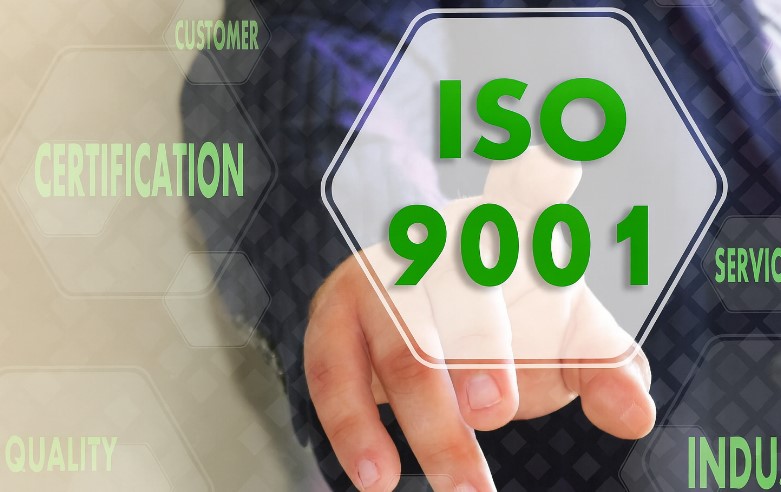Quality management is one of those areas that quietly shapes the success of any organization. Products that meet expectations, services that run smoothly, customers who come back for more – it rarely happens by accident.
Behind the scenes, strong quality systems are doing the heavy lifting. For many organizations, the big decision comes down to whether to follow internationally recognized standards, like ISO 9001, or to rely on internal quality assurance (QA) standards crafted in-house.
Both approaches aim to produce reliable results, but the way they work – and the impact they have – can be very different. Let’s break it down in detail.
Key Highlights
- ISO 9001 offers globally recognized certification that boosts credibility and supports international growth.
- Internal QA standards are flexible and tailored but lack external validation.
- ISO requires more resources, while internal standards are cost-effective for local operations.
- Some businesses start with internal QA, then align with ISO for broader recognition.
What ISO Standards Bring to the Table

The International Organization for Standardization, better known as ISO, has been shaping quality expectations around the globe for decades.
ISO is a non-governmental body that collaborates with experts from over 170 countries to create standards for everything from quality management to environmental practices and information security.
The ISO 9000 family is the centerpiece for quality management, and ISO 9001:2015 is its most widely adopted standard.
It provides a framework for organizations to consistently deliver products and services that satisfy both customers and regulators, while encouraging ongoing improvement. A few quick facts give you a sense of its reach:
- Over 1.25 million organizations in 178 countries are certified to ISO 9001.
- It applies to any organization, large or small, across industries.
- Certification signals to the outside world that the company takes quality seriously and operates under a structured, tested system.
A small supplier in Europe can prove to a client in the U.S. or Asia that their processes meet expectations without anyone having to reinvent the wheel.
What Internal QA Standards Focus On
Internal QA standards take a different route. Instead of adopting an external standard, an organization develops its own rules, processes, and metrics for quality.
According to Hubtrac, a tire manufacturer from Austria, manufacturers sometimes embed proprietary predictive-stress technologies into their internal QA system to manage tyre‑carcass performance across variable loads.
These standards are usually built to match the company’s unique products, workflow, and culture. A few examples make it easy to picture:
- A local bakery might set internal QA standards for baking times, ingredient storage, and packaging checks to ensure every loaf meets its taste and freshness goals.
- A software startup might focus on coding guidelines, test coverage, and peer review steps to avoid shipping buggy features.
Compliance is usually verified through internal audits or by meeting customer requirements in practice. The upside is flexibility. The downside is that, outside your own walls, few people will recognize or trust those standards without proof.
Comparing ISO and Internal QA Standards

To make the differences clear, it helps to look at several core areas: scope, recognition, development, and impact.
1. Scope and Applicability
ISO Standards
- Designed to work across industries, countries, and organization sizes.
- Provide a universal framework that can scale from a small workshop to a global manufacturing network.
Internal QA Standards
- Tailored for a single organization’s unique needs.
- Most effective for local or niche operations where global recognition isn’t required.
| Aspect | ISO Standards | Internal QA Standards |
| Scope | Global, fits any industry or size | Organization-specific |
| Applicability | Universal across sectors | Limited to internal operations |
2. Certification and Recognition

One of the biggest practical differences comes down to credibility in the marketplace.
ISO Standards
- Require external certification from accredited auditors.
- Bring global recognition, often opening doors to contracts or markets that demand certified suppliers.
- Serve as a shorthand for trust, particularly in sectors like aerospace, healthcare, or automotive.
Internal QA Standards
- Typically not certified externally.
- Recognition is internal or at best, limited to certain clients who have reviewed the company’s processes.
- Can be a barrier when trying to win regulated or international business.
| Aspect | ISO Standards | Internal QA Standards |
| Certification | External, third-party audits | Internal audits only |
| Recognition | Globally trusted | Internal or local recognition |
3. Development and Structure
The way standards are developed also shapes how robust and transferable they are.
ISO Standards
- Created through a consensus of global experts, which means they incorporate a wide range of best practices.
- Based on seven core principles for quality management:
- Customer focus
- Leadership
- Engagement of people
- Process approach
- Improvement
- Evidence-based decision making
- Relationship management
- Follow a standardized structure that ensures consistency and thorough documentation.
Internal QA Standards
- Created in-house, often by quality managers or department leads.
- Highly customized, which makes them practical for daily operations but sometimes narrow in scope.
- Can range from informal checklists to fully documented procedures, depending on resources and priorities.
| Aspect | ISO Standards | Internal QA Standards |
| Development | Global experts, consensus-based | Created by the organization |
| Structure | Standardized, principle-driven | Varies based on internal needs |
4. Benefits of ISO Standards
ISO certification brings a set of clear advantages that internal standards rarely match:
- Competitive edge: Signals commitment to quality, often winning over clients who demand certified suppliers.
- International recognition: Makes it easier to enter global markets.
- Structured improvement: Encourages organizations to review and enhance processes regularly.
- Customer confidence: Offers external assurance that processes are audited and reliable.
- Operational consistency: Ensures that all branches or teams follow the same framework, reducing variability.
5. Limitations of Internal QA Standards
While flexible and cost-effective, internal QA standards come with trade-offs:
- Lack of external validation can limit credibility.
- Limited recognition means they may not satisfy global or regulated market requirements.
- Potential blind spots, since internal teams may overlook areas that international standards would cover.
- Missed opportunities for best practices, as they may not incorporate global insights or innovations.
6. When Internal QA Standards Make Sense
There are scenarios where internal standards are the smarter first step:
- Local-only operations: A neighborhood service provider or regional retailer may not need ISO recognition.
- Highly specialized processes: Internal standards can focus on unique needs that ISO frameworks only cover broadly.
- Cost-sensitive environments: ISO certification can run $10,000-$15,000 for small businesses, which can be prohibitive.
- Step toward ISO: Many companies start with internal QA standards to build discipline, then move toward ISO certification later.
Examples

ISO Standards in Action
A multinational pharmaceutical company needs consistent quality across all production sites to satisfy regulators and patients alike.
ISO 9001 provides a single framework, and external certification reassures every government agency and partner that quality requirements are being met.
Even the U.S. Air Force has leaned on ISO 9001 principles to keep its supply chain operations precise and reliable.
Internal QA Standards in Action
A small software startup wants to avoid shipping bugs but doesn’t need international recognition yet.
By setting internal QA standards – like strict peer review, automated testing thresholds, and version control requirements – they can maintain high quality for their clients.
Numbers That Tell the Story
- 1.25 million organizations worldwide hold ISO 9001 certification.
- Studies have shown defect rates can drop by up to 10% after ISO implementation (per ComplianceQuest).
- Internal standards, while less quantifiable, often translate to better efficiency and customer loyalty when well-designed for the company’s needs.
Choosing the Right Path

Deciding between ISO and internal QA standards comes down to a few core factors:
- Market reach: Global players benefit from ISO. Local operators can thrive on internal standards.
- Regulatory environment: Heavily regulated industries almost always require ISO.
- Resources: ISO requires time, documentation, and money. Internal standards are leaner to implement.
- Strategic goals: Companies committed to long-term growth and continuous improvement often see ISO as an investment in credibility.
Some organizations blend the two approaches. They start with internal QA standards to strengthen daily operations and eventually align those processes with ISO requirements to pursue certification. This staged approach spreads out costs and builds confidence.
Final Thoughts
ISO and internal QA standards both aim to keep quality front and center, but the way they do it and the impact they create can be very different.
ISO 9001 offers a globally recognized framework that drives consistency, opens international doors, and signals a commitment to excellence.
Internal QA standards provide the freedom to shape quality processes to fit an organization’s unique rhythm, but they carry less weight outside its own walls.
The smartest choice depends on your market, resources, and ambitions. Whether the goal is winning international clients or simply keeping local operations tight and reliable, a well-planned quality approach lays the groundwork for growth.
Related Posts:
- ISO 27001 vs SOC 2: A Quick Breakdown on the…
- How to Choose Between Epoxy, Acrylic, Metal, and PVC…
- What Are the Most Important Data Center Security Standards
- How to Choose High-Performance Knives - Key Features…
- What Are Selection Statements in Java? Key Concepts…
- Obtaining SEMI License in Spain: Key Insights








